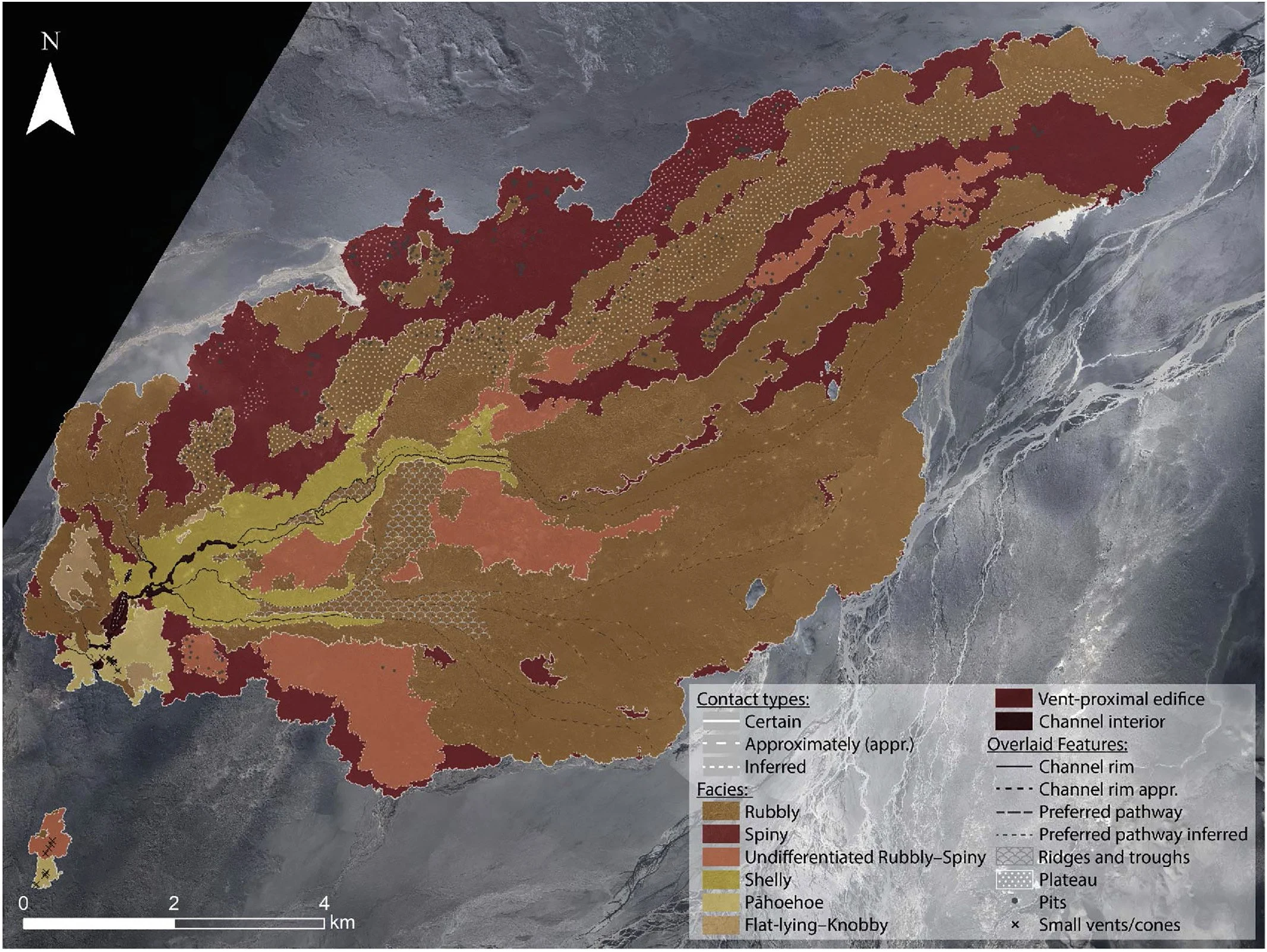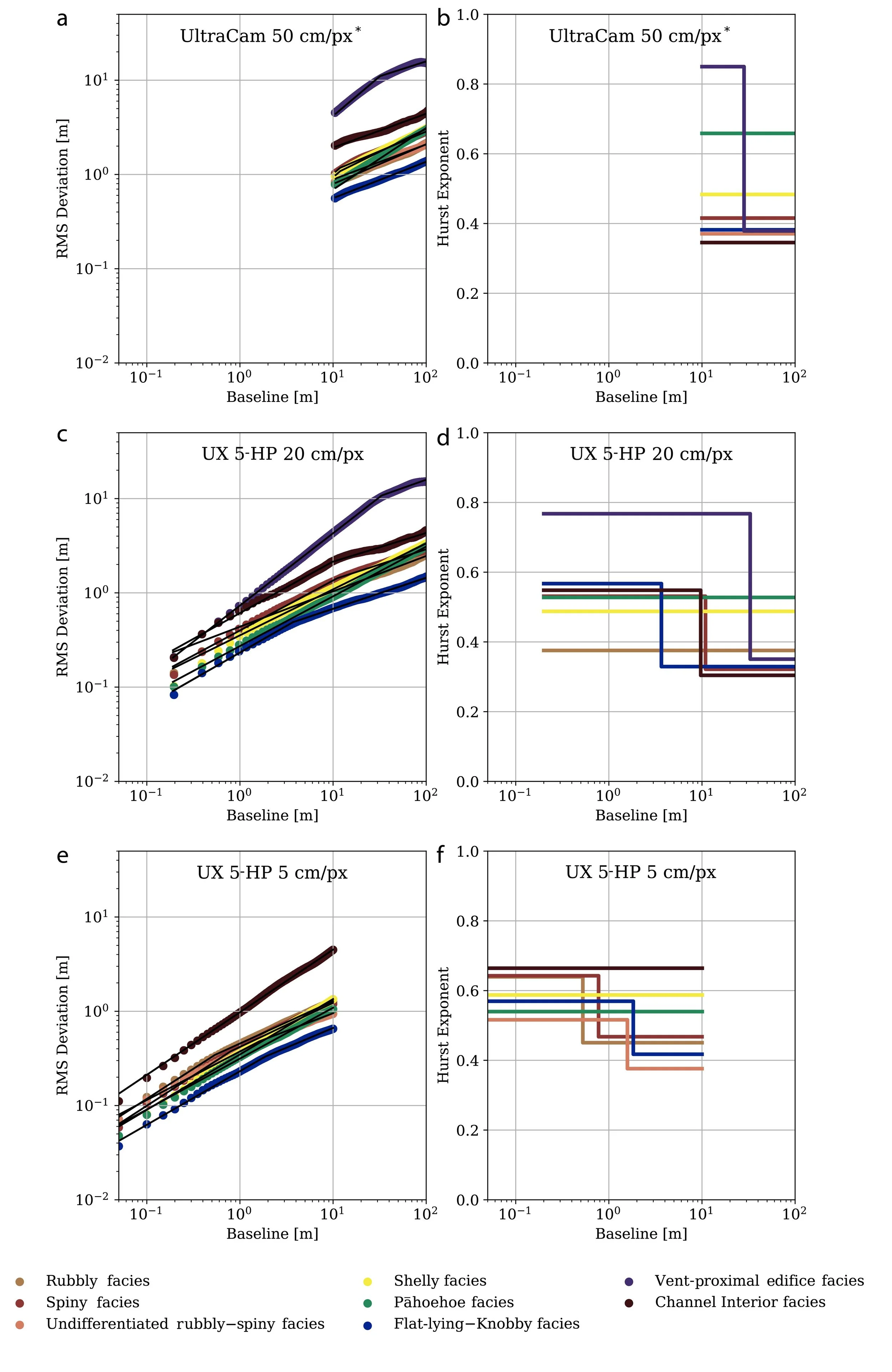
Terrestrial Volcanism
Toward an understanding of lava surfaces and their relationship to emplacement dynamics.
The 2014–2015 Holuhraun Eruption Site, Iceland
To successfully determine the controlling factors of lava morphologies, volcanic surfaces need to be studied and classified. Earth presents a perfect laboratory, with well-preserved ancient lava surfaces and active eruptions. Specifically, the 2014–2015 Holuhraun lava flow–field presents an outstanding site to study controlling factors because it is the largest effusive eruptions since ~235 years, it was well monitored, the chemistry remained constant, and the lava had no topographic confinement.
To better understand lava behavior, the volcanic surfaces have to be characterized in detailed. Our studies have shown that Holuhraun is dominated by transition lava types, including rubbly and spiny lava, with minor contributions of traditional lava types, such as ʻaʻā and classical pāhoehoe (Voigt et al., 2021a, Voigt et al., 2021b). The solidified lava at Holuhraun record disruption events, mainly in the characteristics of the rubbly facies, as well as intense inflation after the initial emplacement, seen in the rubbly, spiny, and undifferentiated rubbly–spiny facies. Inflation within rubbly lava indicates that after an initial stage of forming a continuous crust, followed by intense surface disruption (forming rubble), rubbly lava tends to reestablish a coherent and thermally insulating layer, thereby avoiding rapid cooling.
Generally, lava surfaces can be used as a tool to interpret their emplacement dynamics. However, the factors directly controlling the lava texture are poorly understood and my work addresses this issue by determining the links between unsteady eruption conditions associated with fissure-fed eruptions and resulting lava morphologies. Results from the 2014–2015 Holuhraun show that lava morphologies are dominantly controlled by the effusion rate at the vent during the early phases of the eruption and by lava transport processes as the system evolves (Voigt et al., 2022).
Fagradalsfjall Eruption, Iceland
Active effusive eruptions provide a unique opportunity to make in-situ measurements of eruptions dynamics, such as flow velocities and effusion rates. During the 2021 and 2022 Icelandic Fagradalsfjall eruptions, we collected a variety of UAS data during the eruption to calculate flow velocities and infer local effusion rates, a technique I began developing during the eruptions. In combination with airborne and satellite data, these direct measurements will advance our understanding of emplacement dynamics and their effect on lava morphologies.
Relevant Publications
Linking Lava Morphologies to Effusion Rates for the 2014–2015 Holuhraun Lava Flow-Field, Iceland
J. R. C. Voigt, C. W. Hamilton, G. Steinbrügge, Á. Höskuldsson, I. Jónsdottir, and T. Thordarson (2022)
Geology
Geomorphological Characterization of the 2014–2015 Holuhraun Lava Flow-Field in Iceland
J. R. C. Voigt, C. W. Hamilton, S. P. Scheidt, U. Münzer, Á. Höskuldsson, I. Jónsdottir, and T. Thordarson (2021)
Journal of Volcanology and Geothermal Research
Roughness Characterization of the 2014–2015 Holuhraun Lava Flow-Field in Iceland: Implications for Facies Mapping and Remote Sensing
J. R. C. Voigt, C. W. Hamilton, G. Steinbrügge, and S. P. Scheidt (2021)
Bulletin of Volcanology
Differentiating Fissure-Fed Lava Flow Types and Facies Using RADAR and LiDAR: An Example From the 2014–2015 Holuhraun Lava Flow-Field.
G. D. Tolometti, C. D. Neish, C. W. Hamilton, G. R. Osinski, A. Kukko, and J. R. C. Voigt (2022)
Journal of Geophysical Research: Solid Earth





